Neiva, Colombia – I was practically stumbling out of the plane. It was only a 40-minute long plane ride but I swear (and I don’t believe I am exaggerating when I say) it was one of the biggest teases of my life.
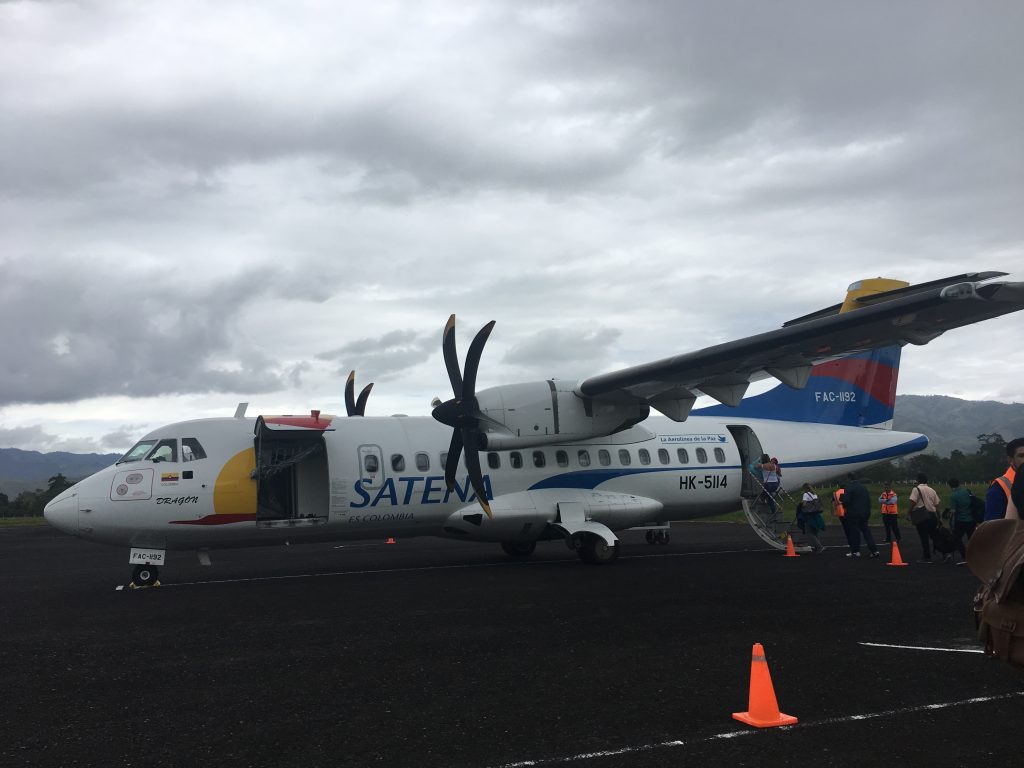
You see, that previous night I got into Bogotá around 1:00 a.m. (thanks to delays in Miami). After two hours of sleep, I was up again to catch a 7:00 am plane to Armenia. Out of all of the plane rides in my life, I longed for this one to be a nice, long one. But nope, I only had 40 minutes to knock out in a deep sleep.
Nearly every morning there was a 7:00 am plane out of somewhere to get to a new region elsewhere; from Bogotá to Armenia, back to Bogotá and flying out to Nevia the following morning. And if it wasn’t a plane ride it was a road trip of sorts; to Garzón or a further drive deep into the country into Pitalito.
In a way, this characterizes Colombia as a producing country. There’s a vast variety of regions and microclimates throughout the country and this makes it one of the best-producing countries as well as one of the most complex.
By the time we touched down I hadn’t seen Colombia in the daylight and I was half awake. As I was stumbling out of the plane I reminded myself of two things; consuming large amounts of coffee is guaranteed on this trip and holy hell – I am actually in Colombia.
What I would learn in my short week in Colombia is that this origin is vastly complicated in coffee, in politics and geography. And no matter how many years you source from there and work with producers and exporters alike, there is no telling what the rolling valleys of Colombia will give you.
General Info
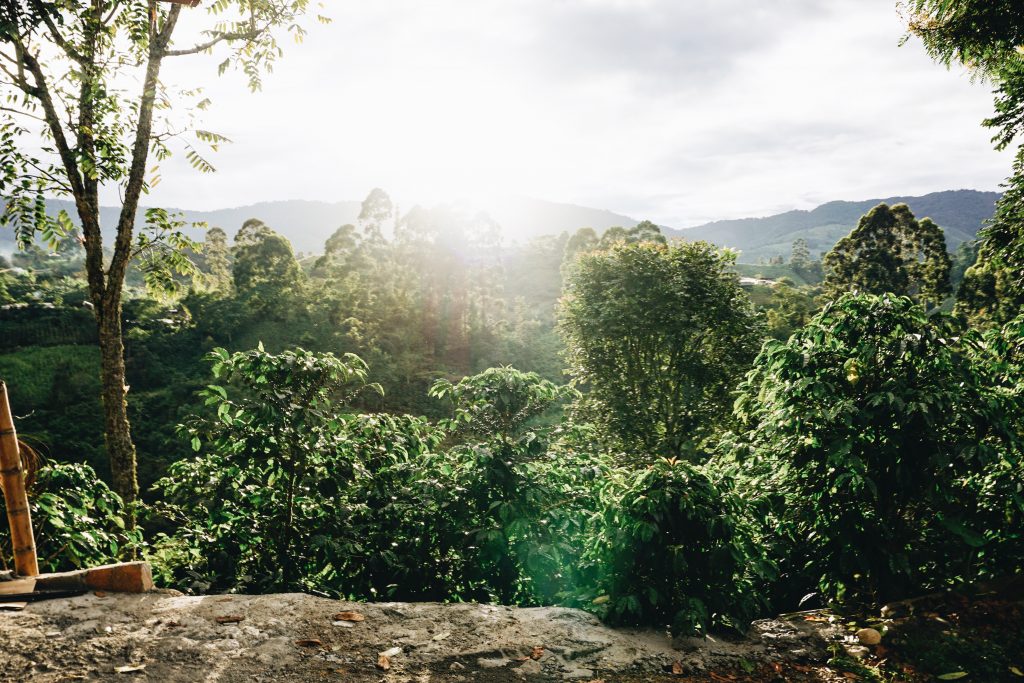
The only other coffee origin I had been to was Tarrazú in Costa Rica and I was there on my own at the time and not with an importing company. Morten, our founder and with whom I traveled with on the trip, had preempted me to not consider the two alike. Colombia was a coffee “Disneyland” he had told me. I wasn’t quite sure what that meant, but I was sure to find out.
There are about over 500,000 coffee producers in Colombia. The majority of them (nearly 80%) own land that is less than three hectares. There are about 20 of these coffee-growing regions or “departments” throughout the country. Most of these regions are found among three massive mountain ranges deriving from the Andes in the south.
The density of these producers among the land is put into perspective when you go for a drive high into the valleys. Throughout these curvy roads, that hug tight corners that hang over steep mountainsides (nothing a little Aguardiente can’t fix) you can see tiny house after tiny house along the road. There really is not much distance between each home and finca which is different than how Costa Rica and other origins are set up.
Another difference is that most of these producers will build the drying beds on top of their homes; Nearly every home had a drying bed canopy hovering over their homes. One producer we visited was “remodeling” their entire home just to be able to expand their drying beds.
Drying is perhaps one of the most challenging aspects for Colombian producers due to the high levels of humidity. It also varies from microclimate to microclimate and leaves ever producer to tinker their methods for their own land.
Timing is everything among these delicate climates, but this past harvest proved a little more difficult than others.
This Past Harvest
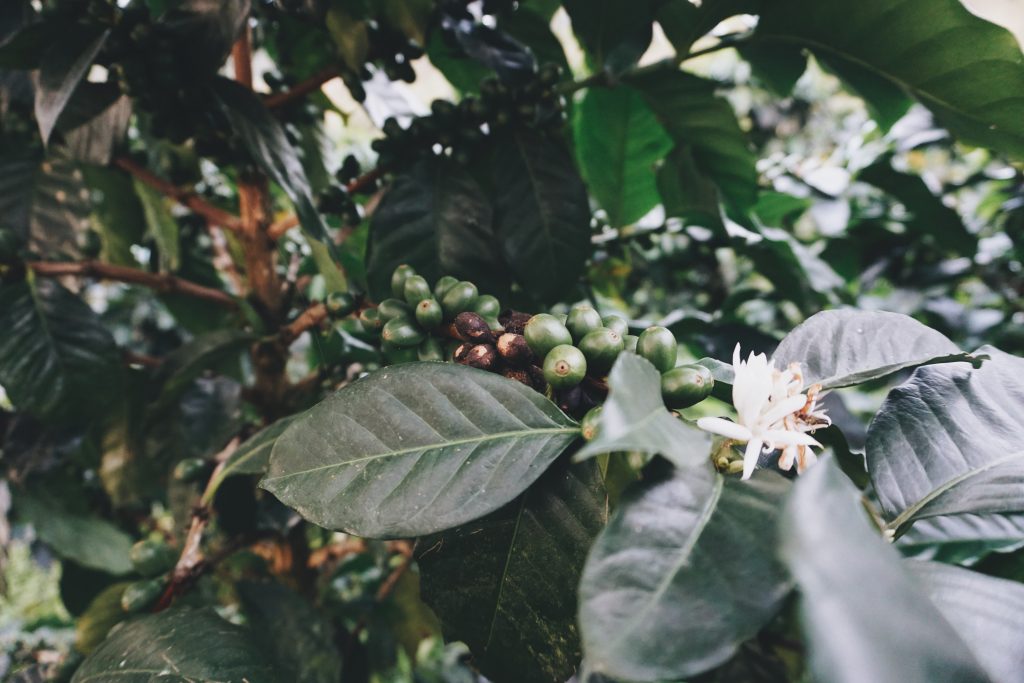
This past year the harvest in Colombia has been a bit complicated. Typically, there are two main harvests in Colombia throughout the year and each main harvest is followed by a smaller harvest or a “mitaca”.
However, this past year prolonged rainfalls have caused the flowering of coffees to be delayed (and therefore the development of the coffee cherry to also be delayed) and larger gaps to lie in between these harvests. This does several things; It causes producers to harvest double or triple the quantity of coffee and places stress on processing those lots in a timely manner.
If it sounds a little confusing that’s because it is. Even one of the executives of Cadefehuila, Colombia’s largest growers’ cooperative, had to sketch it out for us on a piece of paper in his office.
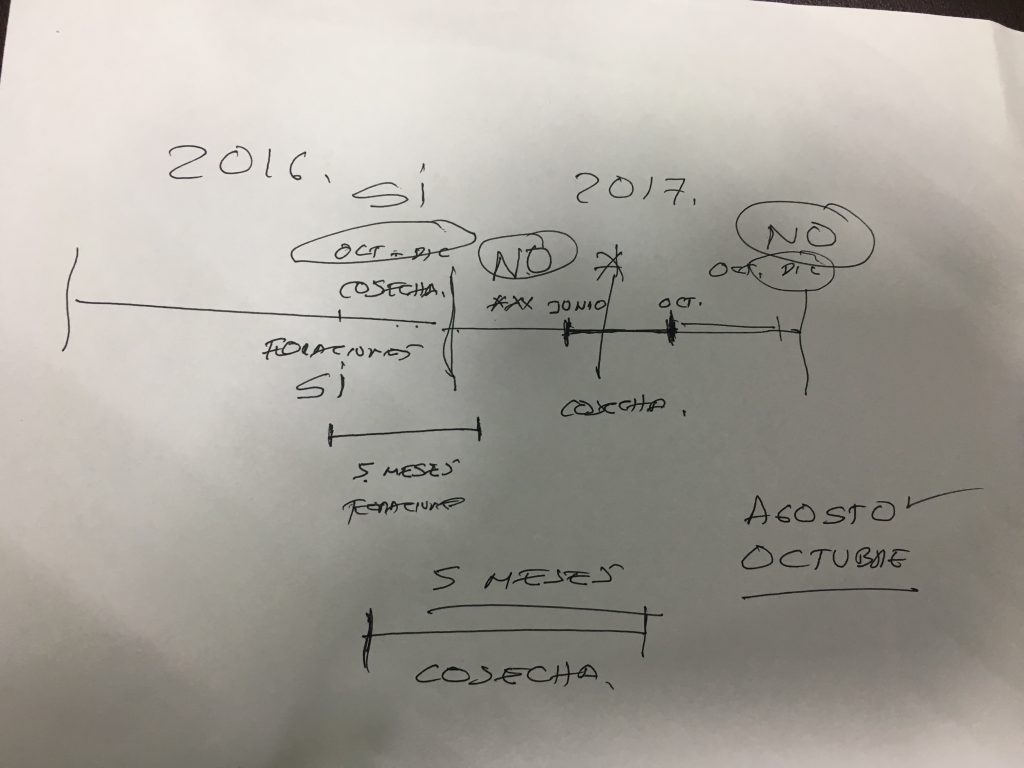
His artwork may have confused you more. But below is a helpful graphic of the typical cosecha or “harvest” for Colombia. The main harvest is called the “Principal” and each one has a following, smaller harvest that follows called the “Mitaca.”
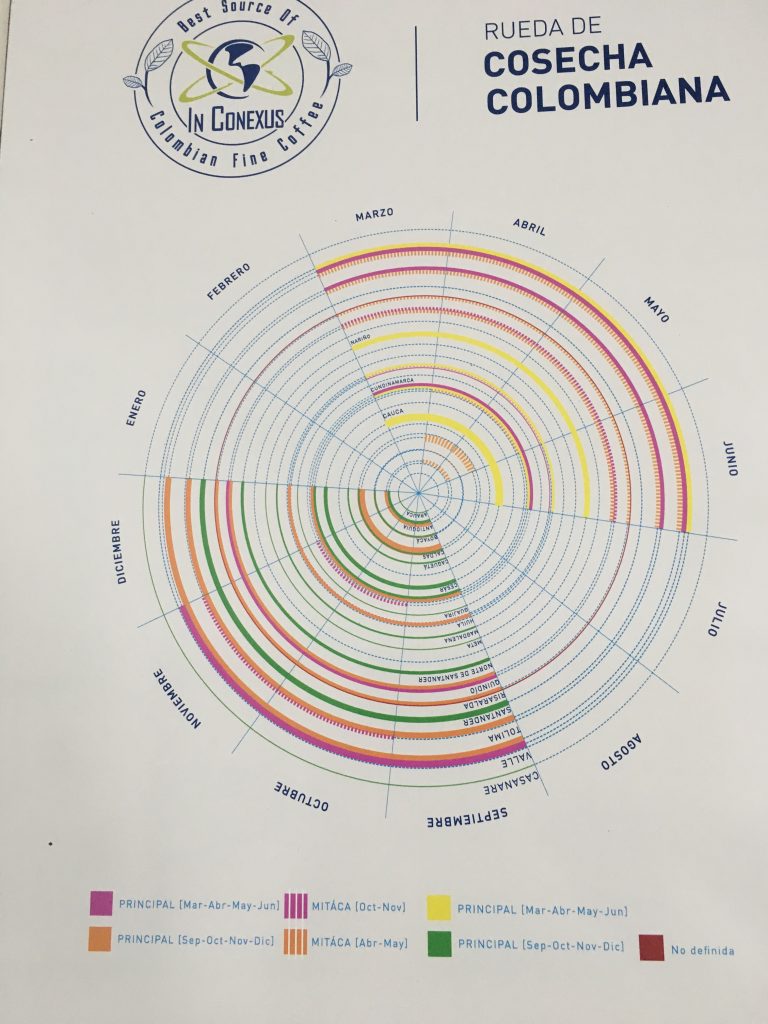
But despite the challenges these producers faced with processing larger volumes in shorter periods of time they were still producing some solid coffees which were evident on the cupping tables.
And we will have Joakim back in Colombia in August where there will be even more coffees to cup from that will be a better indicator of the overall quality of coffees from this past harvest.
Cupping at Origin
Cupping at origin is always a rigorous process. It often can last three to four hours – sometimes longer. The biggest challenge is not letting your mind wander and to stay focused on the cup in front of you. Because while it can be easy to dismiss it as another cup on the table, our purpose is to find the quality and potential in a cup that ultimately can bring in years of business to a producer.
Morten and I first cupped at Azahar’s lab in Armenia. I always learn a lot when cupping alongside him; he not only can taste quality and detect flaws but asks all of the right questions about each producer to allow him to draw a conclusion about each microlot. Because for Nordic it is never just about the coffee’s performance. It is also about the producer, a project we can play a role in or perhaps the potential to improve farm practices and more.
Azahar is an exporter that Morten had established a relationship with years ago in Colombia. Their facilities were beautiful. The team at Azahar are also very lovely people, insanely knowledgeable and are a big asset to helping us connect and work with producers. And what was unique about this particular exporter is that they started out as a roaster. I would later visit their café (soon to expand) in Bogotá. This was perhaps one of my favorite things that happened several times during the trip; You get to see a coffee come full circle from producer to exporter to roaster to cafe. This, in turn, delivered much more information to the end consumers in Bogotá. But more on that later.
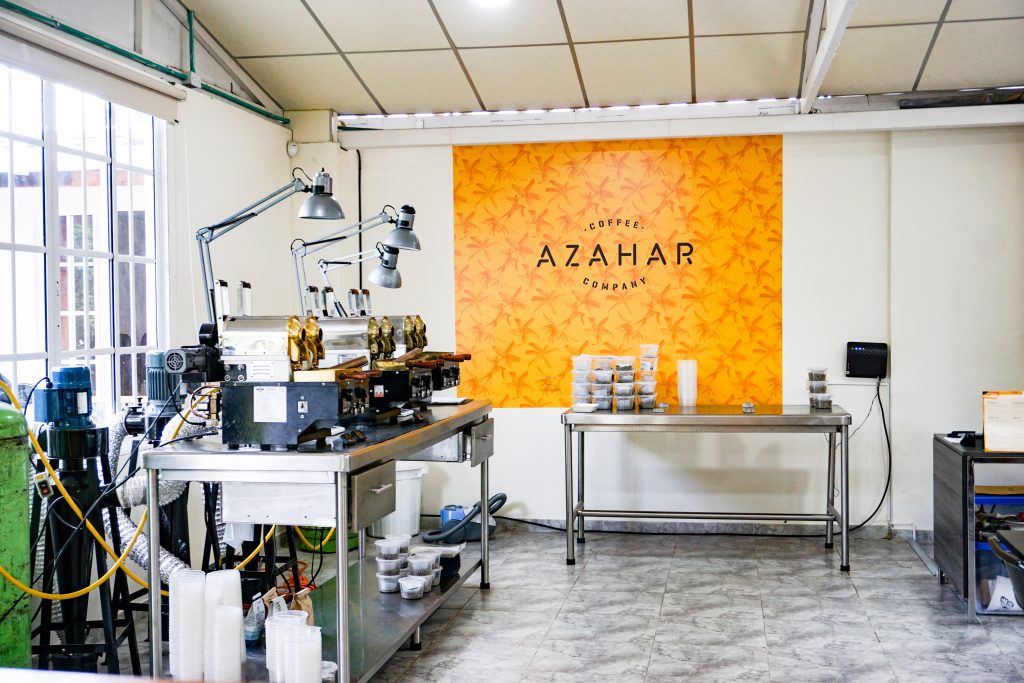
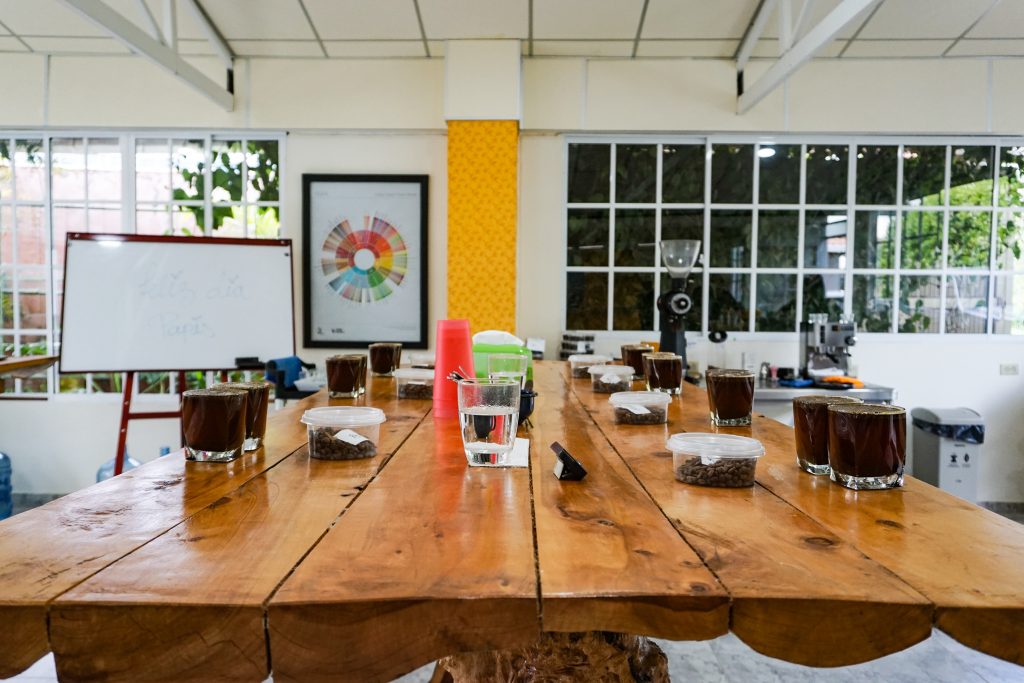
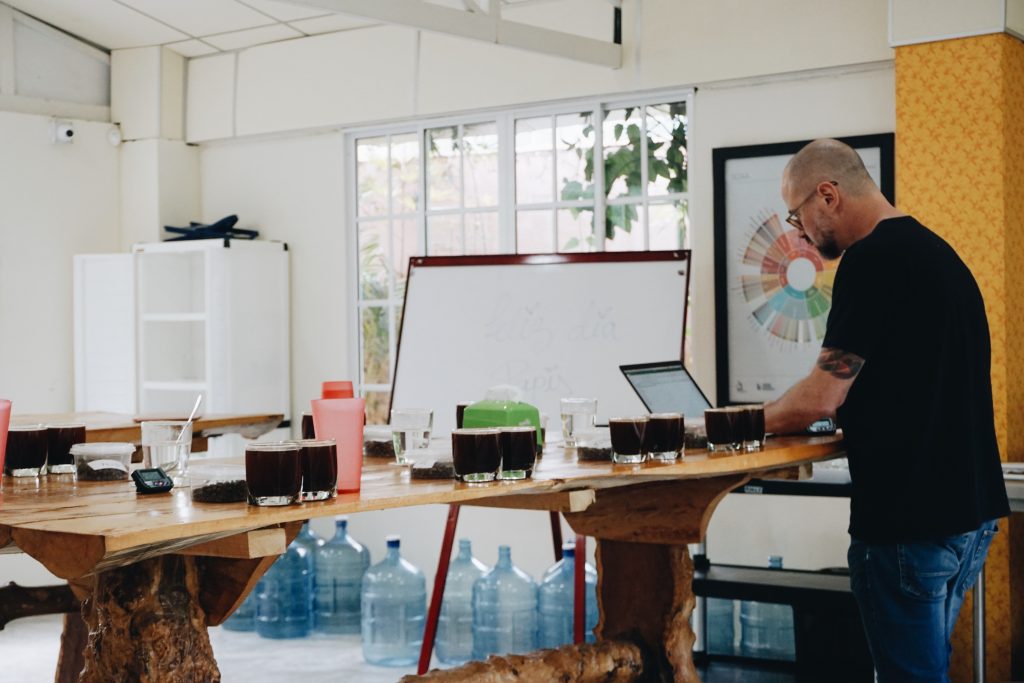
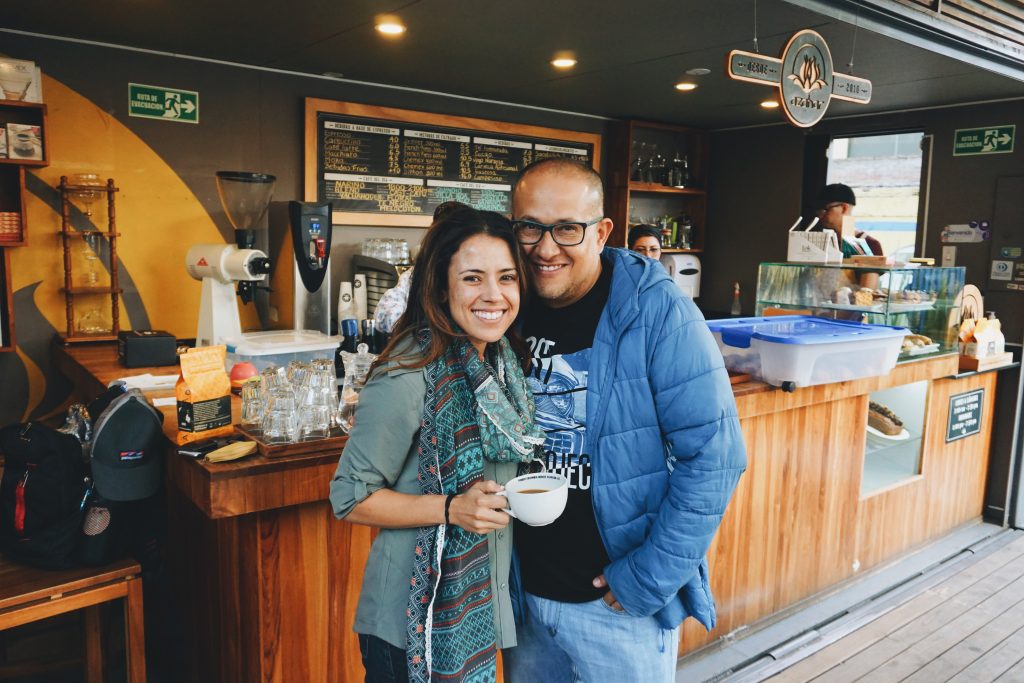
We also cupped extensively at Cococentral in Garzón the following day, in Cadefhuila (currently Colombia’s largest growers cooperative) in Pitalito the day after that, as well as Inconexus in Bogotá on one of my last days.
Each cupping table reflected different regions, micro lots, and municipalities from Colombia. All tables had solid coffees; some were more interesting or unique than others. But again, we were there pretty early on to take a look at the coffees and expect more varieties in August.
Producers and Fincas
By the third day, I was eager to see farms but we were short on time. Our goal was to visit as many farms as we could before the mountain was blanketed in darkness.
Our driver was Gustavo who works with one of the exporters, Azahar. He is constantly on the ground overseeing the producers as well as managing his own specialty coffee café. And when he isn’t driving from one producer’s farm to another, or managing his cafe, he is training for his road biking competitions.
A simple and favorite memory was seeing Gustavo sitting alongside producer Rafael Aya Martinez with his son in his café. It was a great example of where the industry is headed; producers having a direct line to cafes and vice versa.
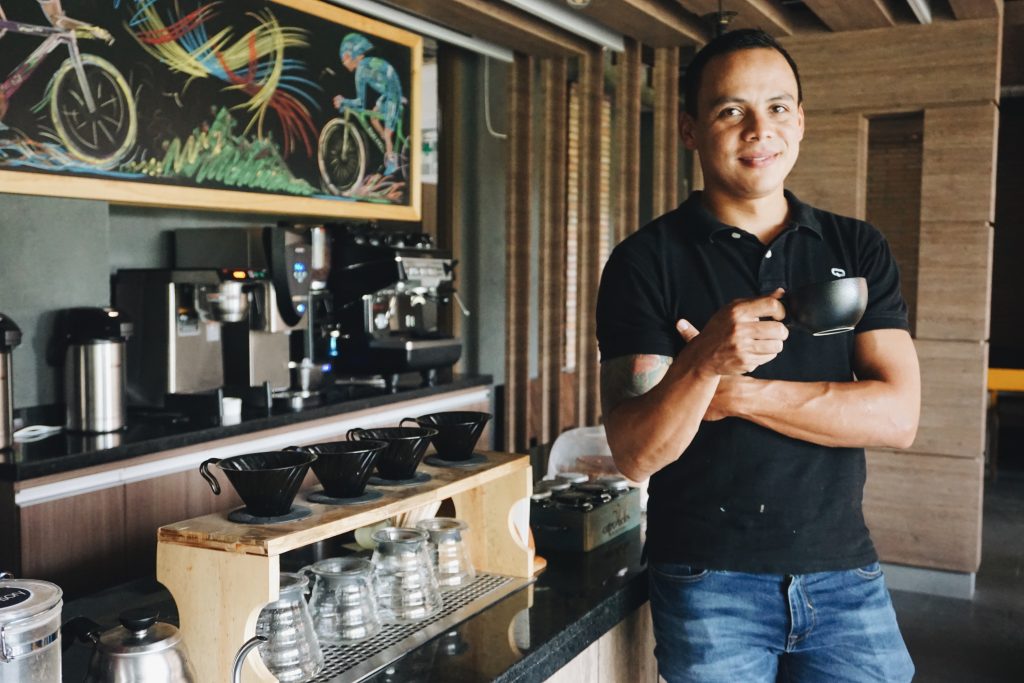
Gustavo alongside his cafe, Sensory
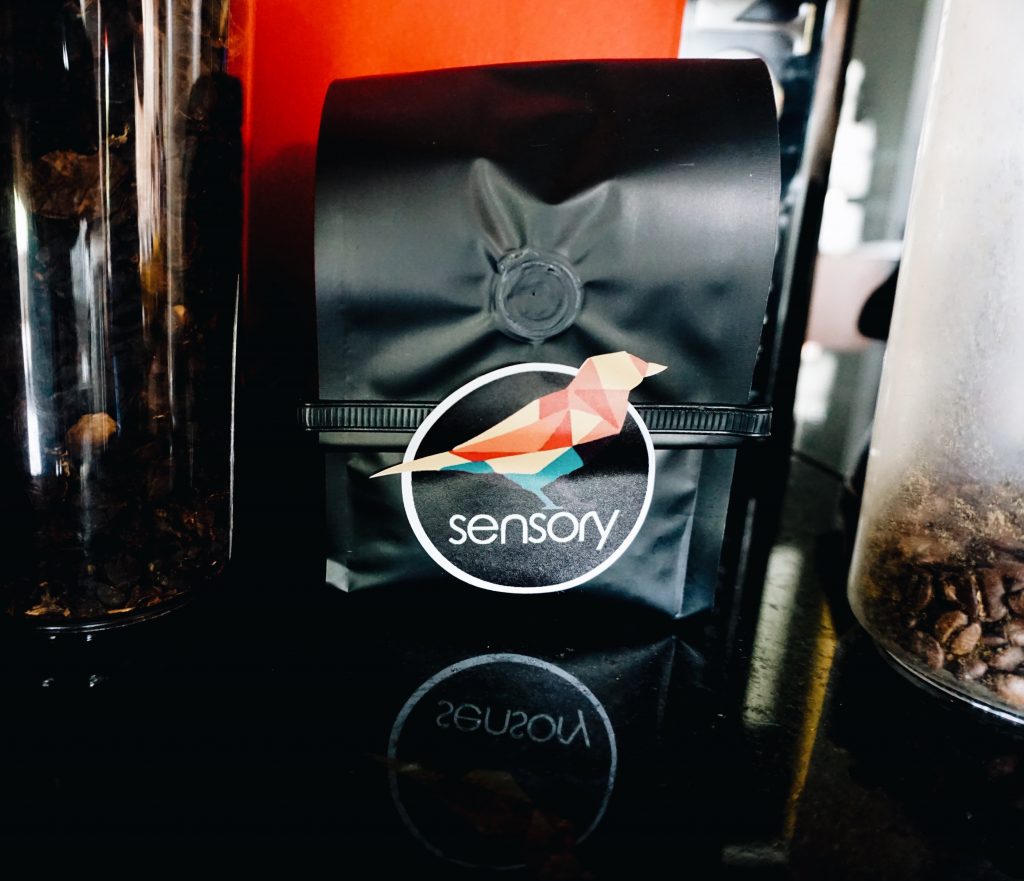
While we visited several farms, I wanted to talk about two farms we visited in Bruselas that I personally found very interesting.
The first farm was Arilio Muñoz, a producer we had first come across last year.
Arilio is a warm-hearted man, with a soft smile constantly on his face. When he walks around his own home (and processing facilities) his hands are on his hips and his eyes are on the ground as he steps over a tool here and a piece of wood there. A dog and several pups are scattered throughout the place. His striped collared button-up shirt is anointed with dirt stains from his craft. He leads Morten to his drying beds to survey his space.
Muñoz stands confidently with one hand in his pocket as he looks out over his space. To any other stranger, it may look like a mad house, but for Muñoz he knows exactly where and why everything lies. He explains his plans of expanding the drying beds – or the roof of his home. He points to where his wife’s farm lies (who he is quick to point out is the true director of operations for their farm and home) and how they bring all of her cherries back to these drying beds. He also knows his own farm and plants like the back of his hand.
Nordic first came across his coffee a year ago and could not help but purchase his coffees directly (which European buyers can read more here).
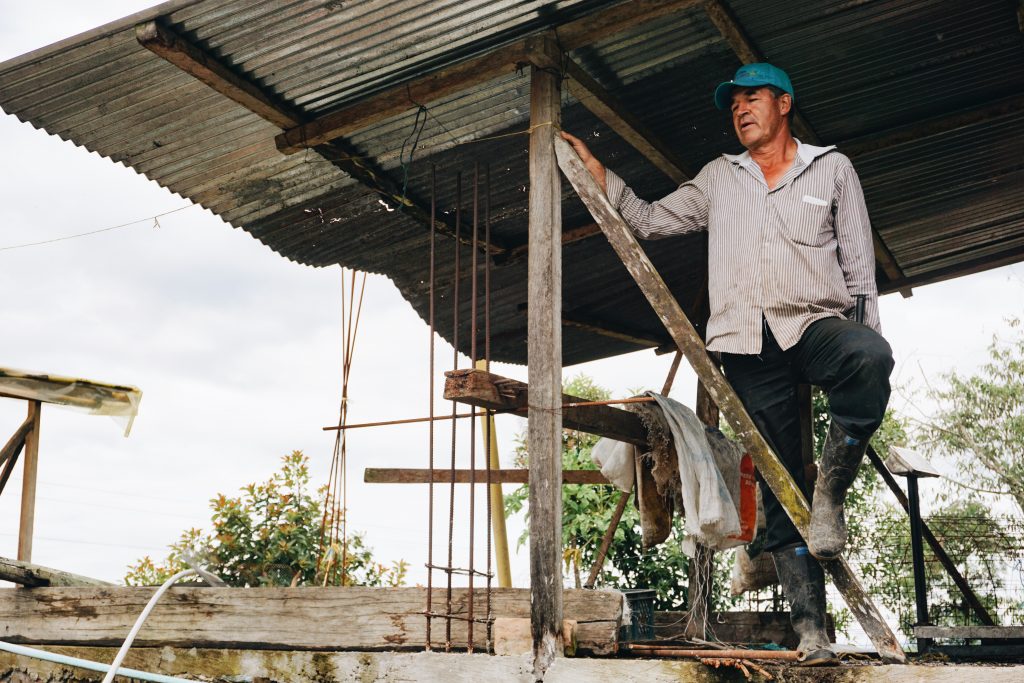

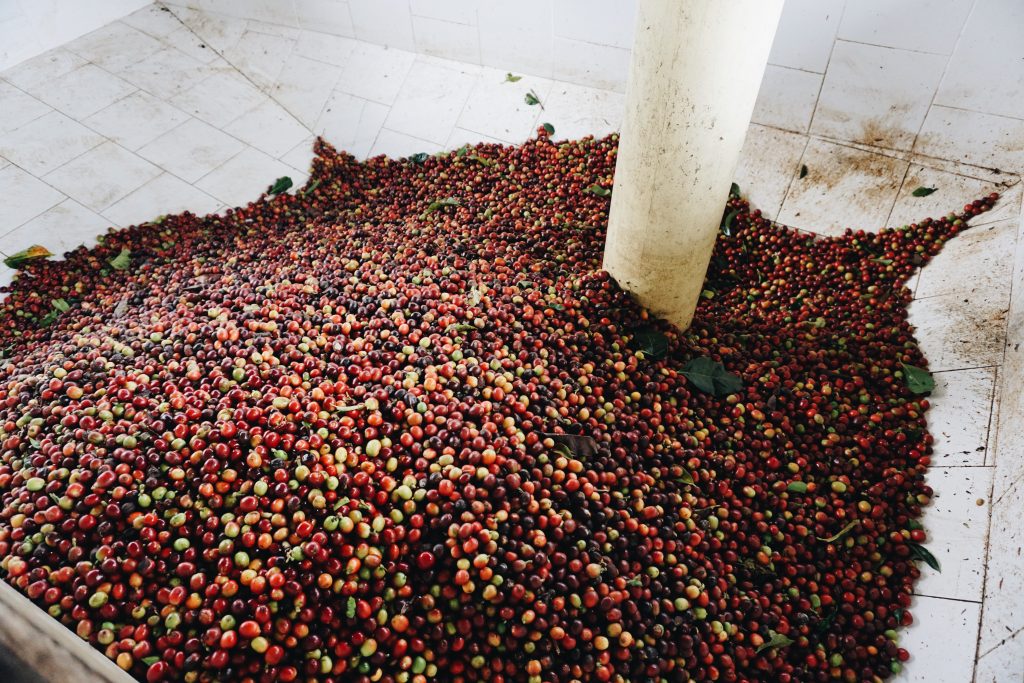
This was in stark contrast to the next farm we visited – Pique. Upon driving up to Pique’s farm (whom we followed via motorbike), he was wearing a bright colored, clean button-up shirt. He was more reserved and greeted us in a professional manner. What first immediately impressed everyone was how immaculate his facilities were.
He was by far one of the most organized and intuitive producers I have come across. He had been tracking coffees, working on lot separation and he even built out a concrete guest house next to his home for the seasonal harvesters. He also created window flaps alongside his drying beds to allow for an even airflow from all directions to better evenly dry the coffee. You can also bet it was one of his coffees that stood out to us on the cupping table.
The two different approaches to coffee go to show how neither approach can guarantee poor or excellent results. Many buyers may closely inspect a producer’s farm or tidiness of mill and they may overlook another crucial aspect of a talented producer; how well they know their own land. Some producers keep calendars, are fastidious in their operations while others simply feel it in their gut.

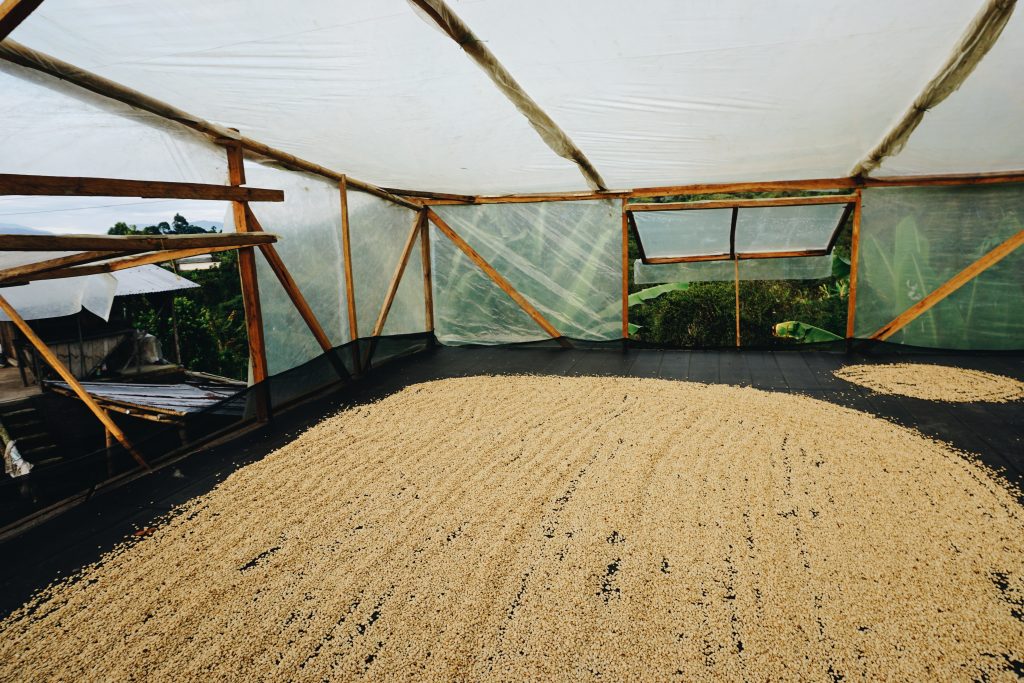
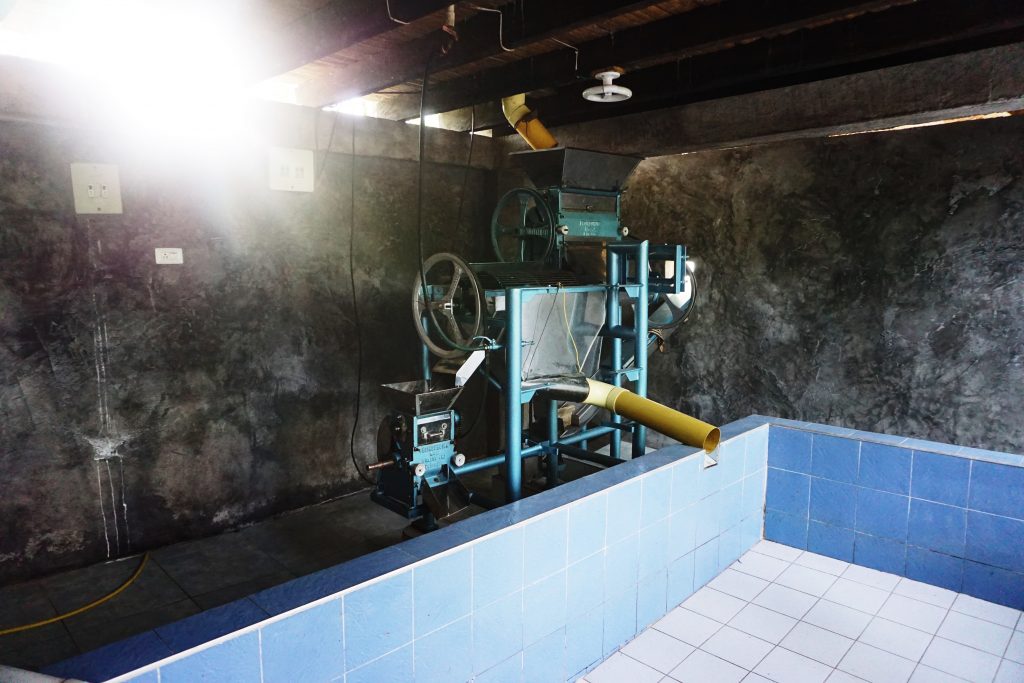

I always said Costa Ricans were my favorite (partly because it was the only origin I had gone to and I, therefore, felt connected to it) but now Colombia is obviously in the mix. But let’s be honest – who doesn’t love Colombian coffee? And if you happen upon an exceptional one, then there goes any hope of making your cup of coffee last a while. So, yes Colombians are my new favorite for now. I am sure that will change once and if I make my way to Kenya.
But beyond coffee, it’s the people that I will always remember. Whether it was Pique’s wife who welcomed us with freshly squeezed Guanaba juice when arriving at the farm or the cab driver who floored it while reassuring me the whole way that “We are going to make it!” and I was not going to miss my flight or the stranger who shared a meal and his stories with me before flying out of Colombia.
I already can’t wait for the next opportunity I have to jump on one small plane to hop onto another somewhere among the green hills of Colombia. But for now, I am simply thankful that coffee can connect us to memories and experiences like these. Wanna go to Colombia with us? We have some seats open on our upcoming trip on August 27 to September 3 in Huila. We’ll be arranging the 3rd Tarqui Cup micro lot competition, visit several farms, and cup loads of fresh delicious coffees. Send an email to Joakim if you’re interested and want to know more!
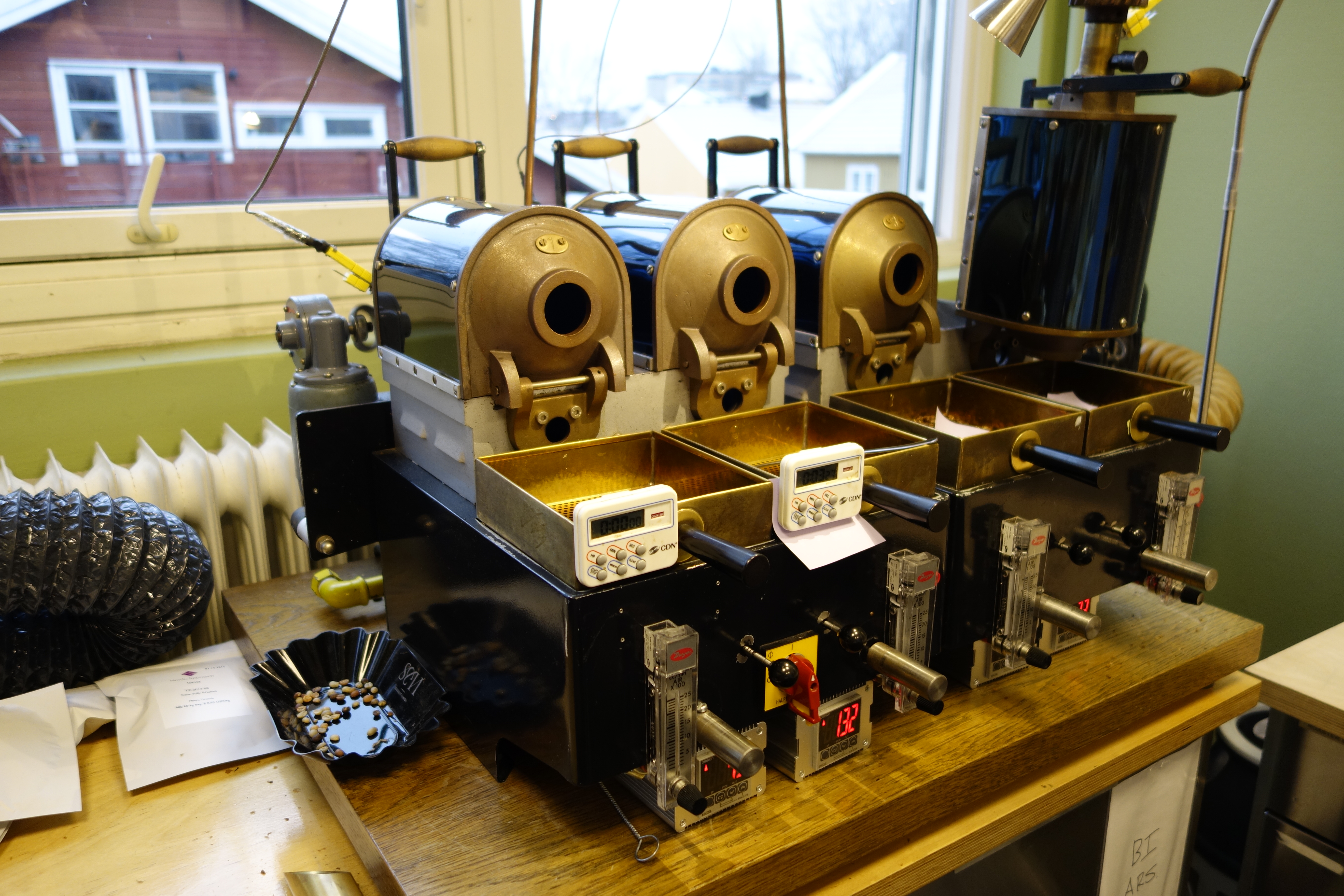
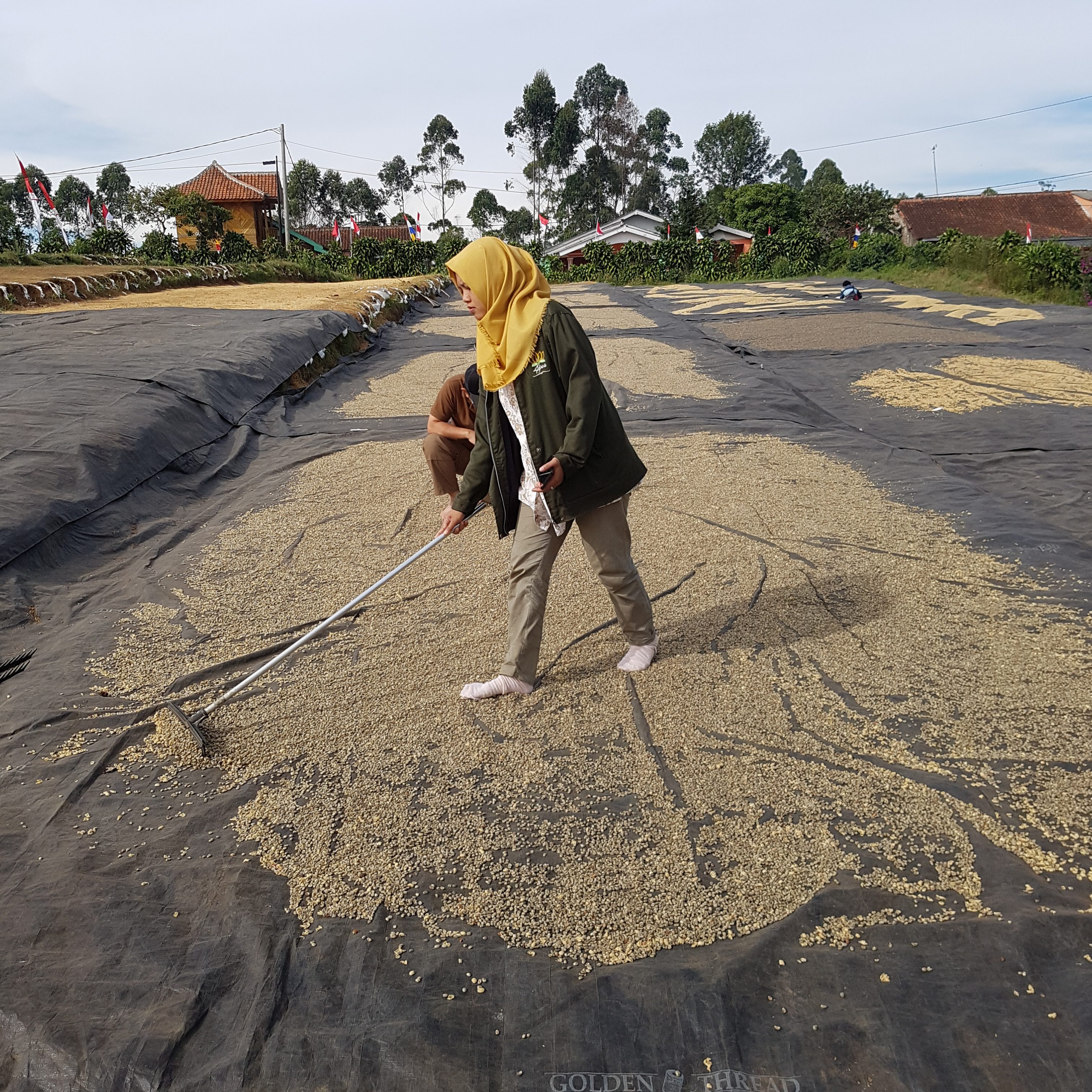
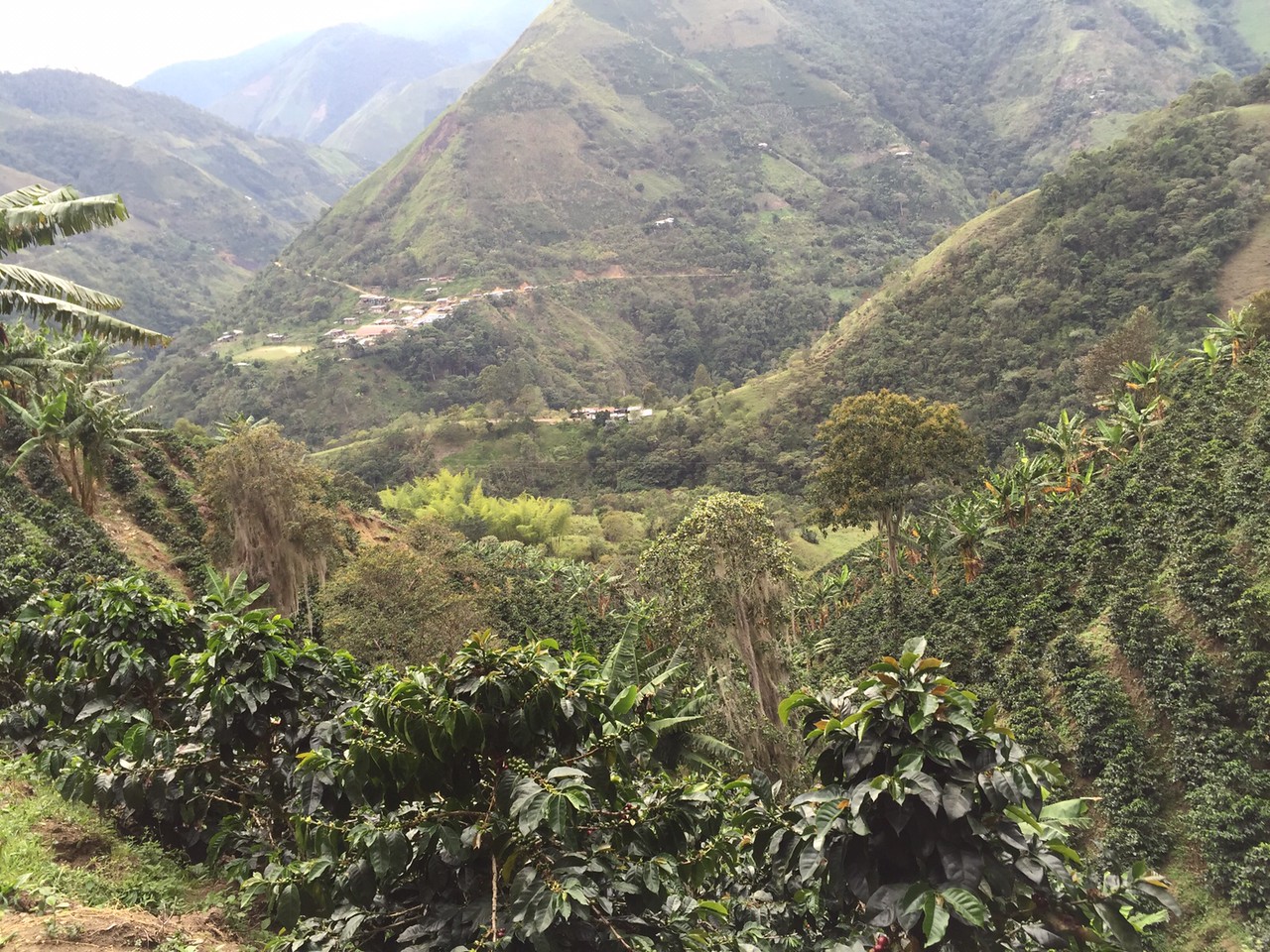
0 Comments